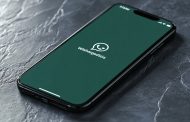Novel design, good cameras, solid performance and battery life make a competitively priced package
The Phone 1 is the first smartphone from the British technology startup Nothing, led by the OnePlus co-founder Carl Pei, who set up on his own with the aim of bringing back a bit of interest and excitement to the increasingly samey world of consumer electronics.
But the firm’s follow-up to the funky Ear 1 earbuds is no flashy top-spec phone. Priced at £399 (A$749), it looks to compete directly with more affordable models such as Samsung’s mid-range A-series and Google’s Pixel 6a. It does so while offering something unique: a series of white LED strips strewn across a transparent glass back to create patterns of light that Nothing calls “glyphs”.
Different light patterns show who is calling, which app is notifying you or even different types of notification from the same app without having to see the screen. You can set one pattern for a work email or one for a personal email in Gmail, for instance, but, unfortunately, you can’t differentiate between messages from different contacts, only calls.
The glyphs and transparent back add a bit of interest to an otherwise fairly understated design. The recycled aluminium sides and flat OLED screen look remarkably similar to an Apple phone, leading more than one person to ask if I was holding an iPhone 13. Still, the build quality is very good, and the full HD 6.55in screen is excellent for the money: big, bright, crisp and super-smooth, thanks to a 120Hz refresh rate.
Specifications
- Screen: 6.55in 120Hz FHD+ OLED (402ppi)
- Processor: Snapdragon 778G Plus
- RAM: 8 or 12GB
- Storage: 128 or 256GB
- Operating system: Android 12 with Nothing OS
- Camera: 50MP main and ultrawide, 16MP selfie
- Connectivity: 5G, eSIM, wifi 6E, NFC, Bluetooth 5.2 and GNSS
- Water resistance: IP53 (splash-resistant)
- Dimensions: 159.2 x 75.8 x 8.3mm
- Weight: 193.5g
A snappy, mid-range chip
The phone has a mid-range Qualcomm Snapdragon 778G Plus chip, which is perfectly capable in day-to-day usage, with the interface and apps feeling pretty snappy.
However, it falls short of the raw performance of top-class chips, which is most noticeable when processing images and its sluggish switching between lenses in the camera after taking photos. Only those mid-range phones with top-spec chips such as Apple’s iPhone SE or Google’s Pixel 6a will perform markedly better for the price.
The battery life is good, lasting about 38 hours between charges including two hours on 5G, putting it on a par with most top devices. You will probably have to charge it once a day.
Sustainability
Nothing rates the battery for at least 800 full charge cycles while maintaining at least 80% of its original capacity. The Phone 1 is generally repairable in the UK and the battery is replaceable by Nothing.
The Phone 1 is made of 100% recycled aluminium with more than 50% of its plastic components made from bio-based or recycled materials. The company plans to publish an environmental impact report for the phone, which it says has a carbon footprint of 58.5Kg CO2 equivalent.
Nothing OS
The Phone 1 ships with a stripped-back version of Android 12 called Nothing OS. It provides all the features you would expect but without the bloat of duplicated apps, mostly relying on those provided by Google, which is a good thing.
The interface is sprinkled with a touch of dot-matrix nostalgia in its widgets, typeface and logos, plus some custom wallpapers and a voice recorder app with a novel record-player-like interface. It is attractive without being too radical.
The company will offer three years of major Android updates and a total of four years of security fixes every two months. That’s decent but a year short of that offered by Google and Samsung’s competing devices, and well behind Fairphone and Apple’s six- to seven-year support.
Nothing OS was smooth and stable but I encountered a few small bugs, some of which were fixed within the testing period, so I have no doubt these remaining problems will be sorted out. When restoring the phone from a cloud backup of my data, autorotation between portrait and landscape did not work, and neither did the Glyph light showing Google Assistant activity. Setting up the phone without restoring my data fixed the problems.
Camera
The Phone 1 has a refreshingly simple lens lineup on the back, with only two 50-megapixel cameras – one normal and one ultrawide – forgoing additional rubbish macro or monochrome cameras common on mid-range phones for marketing purposes.
Both cameras are good for the money. The main camera produces the best images that have generally good colour balance and detail. Photos can lack a little sharpness and fine detail when viewed at full size, and it can be a little difficult to get a sharp shot in low light. The ultrawide produces images with cooler tones and softer detail but is still decent. The camera can occasionally oversaturate parts of an image, such as red flowers losing all definition and almost glowing.
The phone has no telephoto camera but the digital zoom produced usable images at 2x, becoming full of artefacts after about 5x magnification. The glyphs can be lit up to create a fill light at night instead of using the flash, which is novel but produces a blue hue to the images. The selfie camera is equally good, producing detailed photos in good light.
Video recording was solid for the money but only up to 4K at 30 frames a second, not 60 as is increasingly common.
Overall, the Phone 1 is capable of producing really good images, and beats many mid-range rivals, but won’t trouble the best.
Price
The Nothing Phone 1 costs £399 (A$749) with 8GB of RAM and 128GB of storage, £449 (A$799) with 8GB and 256GB, or £499 (A$849) with 12GB and 256GB, and is available in black or white depending on the model.
For comparison, the Google Pixel 6a costs £399, the Samsung Galaxy A53 costs £399, the Fairphone 4 costs £499, and the Apple iPhone SE costs £419.
Verdict
The Phone 1 is a remarkably well-executed first attempt at a smartphone from Nothing.
Its design is distinctive on the back and simple elsewhere. You might not like the iPhone-like look but the recycled aluminium sides certainly feel more premium than the competitive mid-range price might suggest.
The glyph lights on the back are certainly novel and eye-catching but remembering which pattern is which is difficult, and I typically avoid putting phones face down to prevent scratches. It is good to see something different and fun, though.
Despite an odd bug due to be fixed, the Android software is pleasingly bloat-free, which helps the phone feel snappy in use. The battery life is pretty good, too. Four years of promised software updates is good but not the best, and relies on Nothing succeeding in fulfilling its commitment, which is not guaranteed for any new entrant.
It has very stiff competition from rivals such as Google’s excellent Pixel 6a, but compared with a lot of boring mid-range phones, the £399 Nothing Phone 1 stands out.
Pros: novel back design, glyph lights are something different, good screen, decent performance, solid battery life, recycled aluminium, bloat-free Android 12, competitively priced.
Cons: no optical zoom, only four years of security updates, only splash-resistant, Nothing a bit of an unknown quantity.



